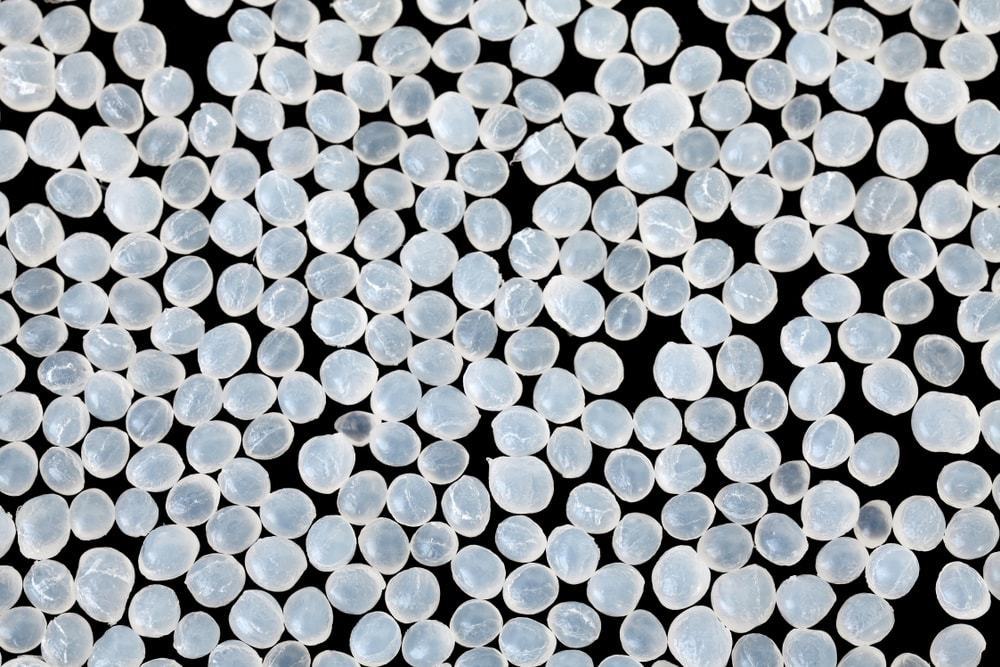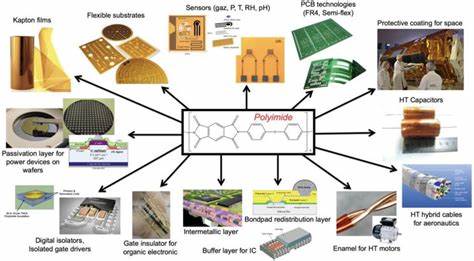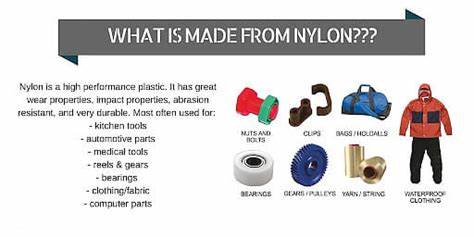Fibers play a crucial role in various industries, from textiles and automotive to electronics and engineering. Among these fibers, polyamide and nylon have gained significant attention due to their unique properties and versatility. Polyamides are a family of polymers characterized by the presence of amide bonds in their chemical structure, with nylon being a well-known subset of this group.
This article aims to clarify the distinction and similarities between polyamide and nylon, enhancing the reader's understanding of these important materials. By differentiating between these fiber types, we can better appreciate their significance in modern industries and make informed decisions in textile technology and material science.
What is Polyamide?
Polyamides are a fascinating family of materials, both naturally occurring and synthetically produced, renowned for their exceptional strength, flexibility, and durability. Let's delve into the world of polyamides, exploring their definition, classification, chemical structure, properties, types, and extensive applications across industries.
Definition and Classification of Polyamide
Polyamides are polymers containing repeating amide linkages (-CO-NH-) in their molecular structure. These versatile materials can be categorized as both natural and synthetic:
1.Natural Polyamides: Derived from renewable sources, natural polyamides include proteins like wool, silk, collagen, and keratin.

2.Synthetic Polyamides: Artificially manufactured, synthetic polyamides are further classified into:
a.Aliphatic Polyamides (e.g., Nylon 6, Nylon 6/6)
b.Aromatic Polyamides or Aramids (e.g., Nomex®, Kevlar®)
c.Semi-Aromatic Polyamides or Polyphthalamides (e.g., Zytel®, Rislan®)
Chemical Structure and Properties of Polyamide
The backbone of polyamides consists of repeating amide groups (-NH-CO-) linked by covalent bonds. The presence of hydrogen bonds between these amide groups contributes to the material's crystallinity, thermal resistance, and chemical resistance.
Key properties of polyamides include:
● High tensile strength and impact resistance
● Excellent durability and abrasion resistance
● Flexibility and elasticity
● Resistance to chemicals, oils, and solvents
● Heat resistance (varies by type)
Types of Polyamides and Their Uses
Types of Polyamides

Polyamides can be classified into three main categories:
1.Aliphatic Polyamides: These include many grades of nylon, such as Nylon 6 and Nylon 6/6. They are known for their high strength, durability, and resistance to abrasion.
2.Aromatic Polyamides (Aramids): Examples include Nomex® and Kevlar®. These polyamides exhibit excellent thermal stability and high tensile strength, making them suitable for demanding applications.
3.Semi-Aromatic Polyamides (Polyphthalamides): These high-performance engineering polymers, such as Zytel® and Rislan®, offer outstanding high-temperature properties and chemical resistance.
Overview of Industries and Products Utilizing Polyamides
Polyamides find applications in numerous industries due to their unique properties and versatility:
● Automotive: Polyamides are used in the production of engine components, fuel systems, and interior parts.
● Aerospace: Aramids are employed in the manufacturing of composite materials for aircraft components.
● Textiles: Nylon is widely used in clothing, sportswear, and industrial fabrics.
● Electronics: Semi-aromatic polyamides are utilized in connectors, switches, and circuit breakers.
● Consumer Goods: Aliphatic polyamides are found in products such as toothbrushes, combs, and food packaging films.
Detailed Examples from Sectors

1.Automotive:
a.Nylon 6 and Nylon 6/6 are used in the production of gears, bearings, and airbag containers.
b.Polyphthalamides (PPA) are employed in the manufacturing of fuel system components and engine covers.
c.Aramids, such as Kevlar®, are used for tire reinforcement and hoses.
2.Aerospace:
a.Nomex® is utilized in the production of fire-resistant aircraft interiors and protective clothing for pilots and crew.
b.Kevlar® is employed in the manufacturing of lightweight, high-strength composite materials for aircraft structures.
c.Nylon is used in the production of parachutes and cargo nets.
3.Textiles:
a.Nylon 6 and Nylon 6/6 are widely used in the production of clothing, swimwear, and sportswear.
b.Kevlar® is utilized in the manufacturing of protective clothing, such as bulletproof vests and cut-resistant gloves.
c.Nomex® is employed in the production of fire-resistant workwear and industrial fabrics.
Production Methods
Polyamides can be produced through various methods, including:
● Polycondensation: Reacting diamines with dicarboxylic acids or diacid chlorides
● Ring-Opening Polymerization: Polymerizing lactams like caprolactam (Nylon 6)
● Interfacial Polymerization: Forming polyamide film at the interface of two immiscible solvents
The choice of production method depends on the desired polyamide type, properties, and end-use application.
What is Nylon?
Nylon, a groundbreaking synthetic fiber, has revolutionized industries with its exceptional properties and versatile applications. In this section, we'll delve into the world of nylon, examining its definition, chemical composition, synthesis, properties, types, and wide-ranging uses.
Definition of Nylon
Nylon is a synthetic thermoplastic polymer belonging to the polyamide family. It was first developed by Wallace Carothers and his team at DuPont in the 1930s as an alternative to silk. Nylon is derived from petroleum-based chemicals, typically diamines and dicarboxylic acids, which undergo condensation polymerization to form long, repeating chains of monomers.
The general chemical formula for nylon is:
[-NH-(CH2)x-NH-CO-(CH2)y-CO-]n
Where:
● x and y represent the number of carbon atoms in the diamine and dicarboxylic acid, respectively
● n represents the degree of polymerization
Properties of Nylon
Nylon's unique properties make it a preferred material in various applications:
1.High tensile strength and durability
2.Excellent abrasion and wear resistance
3.Low moisture absorption and quick-drying
4.Resistance to chemicals, oils, and solvents
5.Elasticity and stretchability
6.Heat resistance and thermal stability
7.Moldability and easy processing
These characteristics enable nylon to withstand harsh conditions, maintain its shape, and deliver reliable performance in demanding environments.
Types of Nylon
Several types of nylon exist, each with specific properties and uses:
Type | Composition | Properties & Uses |
Nylon 6 | Polycaprolactam | Strong, tough, and resistant to abrasion; used in textiles, automotive parts, and consumer goods |
Nylon 6,6 | Hexamethylenediamine + Adipic Acid | High melting point, stiffness, and strength; used in industrial applications, ropes, and tires |
Nylon 11 | 11-Aminoundecanoic Acid | Low moisture absorption and high chemical resistance; used in automotive fuel lines and sporting goods |
Nylon 12 | Laurolactam | Excellent impact strength and weather resistance; used in automotive and industrial applications |
Applications of Nylon

Everyday Products and Industrial Applications
Nylon is used in a wide range of everyday products and industrial applications, including:
1.Clothing: Sportswear, swimwear, hosiery, and lingerie
2.Carpets and upholstery
3.Ropes, cords, and straps
4.Fishing lines and nets
5.Toothbrushes and combs
6.Parachutes and military gear
7.Guitar strings and tennis racket strings
8.3D printing filaments
Current Uses of Nylon in Various Industries
1.Textiles: Nylon's strength, elasticity, and moisture-wicking properties make it ideal for clothing, especially in athletic wear and outdoor gear. Its durability and abrasion resistance also make it suitable for carpets and upholstery.
2.Automotive: Nylon is used in the production of various automotive parts, such as:
a.Tires (reinforcement)
b.Airbags
c.Fuel lines and tubing
d.Gears and bearings
3.Packaging: Nylon films are used in food packaging due to their excellent barrier properties, which help preserve freshness and extend shelf life. Nylon is also used in the production of bottles and containers.
4.Electronics: Nylon's insulating properties and heat resistance make it suitable for use in electrical components, such as connectors and switches.
5.Industrial: Nylon's strength and durability are valuable in industrial applications, such as conveyor belts, gears, and bearings.
Innovative and High-Performance Applications
1.Aerospace: Nylon composites are used in the production of lightweight, high-strength components for aircraft, such as interior panels and ducting.
2.Medical: Nylon's biocompatibility and strength make it suitable for use in medical applications, such as surgical sutures and orthopedic implants.
3.Additive Manufacturing: Nylon powders and filaments are increasingly used in 3D printing, enabling the creation of strong, flexible, and durable parts for prototyping and end-use applications.
4.Sports Equipment: Nylon's high strength-to-weight ratio and impact resistance make it ideal for use in sports equipment, such as helmets, protective gear, and racket strings.
Common Uses of Nylon in Different Sectors
Sector | Applications |
Textiles | Clothing, sportswear, hosiery, carpets, upholstery |
Automotive | Tires, airbags, fuel lines, gears, bearings |
Packaging | Food packaging films, bottles, containers |
Electronics | Connectors, switches, insulation |
Industrial | Conveyor belts, gears, bearings, ropes, nets |
Nylon's diverse applications demonstrate its adaptability and importance in various industries. As research and development continue, we can expect to see even more innovative uses for this remarkable material, pushing the boundaries of what is possible in materials science and engineering.
Nylon Production Processes
Nylon is typically produced through the following processes:
1.Polymerization: Monomers like caprolactam (Nylon 6) or hexamethylenediamine and adipic acid (Nylon 6,6) are polymerized to form long polymer chains.
2.Spinning: The molten nylon polymer is extruded through spinnerets to form fibers, which are then stretched and drawn to align the polymer chains and increase strength.
3.Post-processing: Nylon fibers or resins may undergo additional treatments like heat-setting, dyeing, or compounding with additives to achieve desired properties.
Advances in nylon production, such as recycling and bio-based feedstocks, aim to improve sustainability and reduce environmental impact.
Comparative Analysis of Polyamide and Nylon
While polyamide and nylon are often used interchangeably, there are notable differences between these two materials. In this section, we'll conduct a comparative analysis of polyamide and nylon, examining their chemical structures, properties, applications, advantages, sustainability, and cost-effectiveness.
Similarities between nylon and polyamide
- Both fibers are polymers
- Both are breathable fibers
- Both fibers can be synthetic
- Both fibers are durable
- Both fibers have high strength
- Both fibers are used in consumer products
Chemical Structure and Composition Differences
Polyamides are a broad family of polymers characterized by the presence of amide bonds (-CO-NH-) in their molecular structure. Nylon, on the other hand, is a specific type of synthetic polyamide. The key differences in their chemical structures are:
● Nylon has a more symmetrical and polar structure compared to other polyamides
● The arrangement of amide groups in nylon results in stronger hydrogen bonding, contributing to its superior strength and durability
These structural differences directly influence the physical and chemical properties of nylon and other polyamides.
Physical and Chemical Property Differences
Property | Nylon | Polyamide |
Strength and Durability | Higher tensile strength and abrasion resistance | Varies depending on the specific type of polyamide |
Moisture Absorption | Lower moisture absorption, quick-drying | Higher moisture absorption compared to nylon |
Melting Point and Thermal Stability | Higher melting point and better heat resistance | Varies depending on the specific type of polyamide |
Abrasion Resistance | Excellent abrasion resistance | Generally good, but not as high as nylon |
Nylon's superior strength, durability, and resistance to moisture and abrasion make it the preferred choice for demanding industrial applications.
Application Differences
Polyamides and nylon find applications in various industries, but their specific use cases differ:
1.Polyamide Applications:
a.Automotive injection molding: Fuel lines, air intake manifolds, engine covers
b.Electrical & Electronics: Connectors, switches, circuit breakers
c.Industrial: Chemical processing equipment, oil & gas pipelines
2.Nylon Applications:
a.Textiles: Clothing, sportswear, hosiery, carpets
b.Automotive: Gears, bearings, airbags, tire reinforcement
c.Consumer Goods: Toothbrushes, combs, food packaging films
Nylon's exceptional strength and durability make it ideal for high-performance applications, while polyamides offer a broader range of properties suited for specific industrial uses.
Advantages and Disadvantages
Material | Advantages | Disadvantages |
Nylon | - High strength and durability - Excellent abrasion resistance - Low moisture absorption - Good heat resistance | - Higher cost compared to some polyamides - Limited chemical resistance to strong acids and bases |
Polyamide | - Wide range of properties depending on type - Good chemical resistance - Suitable for various industrial applications | - Lower strength and durability compared to nylon - Higher moisture absorption - Some types may have lower heat resistance |
The choice between nylon and polyamide depends on the specific application requirements and environmental conditions.
Environmental Impact and Sustainability
Both nylon and polyamides are derived from non-renewable petroleum-based resources, which raises concerns about their ecological footprint. However, there are efforts to improve their sustainability:
● Bio-based nylons and polyamides are being developed using renewable feedstocks like castor oil
● Recycling technologies are advancing to reduce waste and minimize the environmental impact of production and disposal
Choosing between nylon and polyamide from a sustainability perspective depends on factors such as the specific manufacturing processes, end-of-life management, and the availability of eco-friendly alternatives.
Cost-Effectiveness
The cost implications of using nylon vs. polyamide vary depending on the application and manufacturing process:
● Nylon generally has a higher cost compared to some polyamides due to its superior performance properties
● However, nylon's durability and long service life can offset initial costs in the long run
● Polyamides offer a wider range of cost options depending on the specific type and grade
Manufacturers must conduct a thorough cost-benefit analysis considering factors such as material properties, application requirements, and production volume to determine the most cost-effective choice between nylon and polyamide.
Industrial Applications and Case Studies
Polyamide and nylon have proven to be invaluable materials across various industries, thanks to their unique properties and versatility. In this section, we'll explore real-world applications and case studies showcasing how these materials have revolutionized the automotive, textile, electronics, and engineering sectors.
Automotive Uses of Polyamide and Nylon
The automotive industry has widely embraced polyamide and nylon for their durability, strength, and resistance to heat and chemicals. Here are some key applications:
1.Engine Components: Polyamides are used in the production of air intake manifolds, valve covers, and oil pans, thanks to their excellent heat resistance and dimensional stability.
2.Fuel Systems: Nylon is a popular choice for fuel lines, fuel tanks, and quick connectors due to its chemical resistance and low permeability to hydrocarbons.
3.Exterior Parts: Polyamides and nylon are used in the manufacture of mirror housings, wheel covers, and radiator grilles, offering impact resistance and weatherability.
4.Interior Components: Nylon finds application in seat belts, airbag containers, and carpeting, providing strength, safety, and durability.
Textile Innovations with Nylon
Nylon has transformed the textile industry with its unique properties and versatility. Some notable innovations include:
1.High-Performance Sportswear: Nylon's moisture-wicking, quick-drying, and stretchable properties make it ideal for athletic clothing, swimwear, and outdoor gear.
2.Durable Fabrics: Nylon's high tensile strength and abrasion resistance enable the production of long-lasting textiles for upholstery, luggage, and industrial applications.
3.Sustainable Innovations: Bio-based nylons, derived from renewable resources like castor oil, are gaining traction as eco-friendly alternatives in the textile industry.
Polyamide in Electronics and Engineering
Polyamides have found extensive use in the electronics and engineering sectors due to their electrical insulation properties, heat resistance, and mechanical strength.
1.Electrical Components: Polyamides are used in the production of connectors, switches, and circuit breakers, providing reliable insulation and durability.
2.Wiring and Cable Insulation: Nylon's excellent dielectric properties and resistance to abrasion make it suitable for wire and cable insulation in various industrial applications.
3.3D Printing: Polyamides, particularly Nylon 12, have become popular materials for additive manufacturing, enabling the creation of strong, flexible, and functional parts for prototyping and end-use applications.
4.Gears and Bearings: Nylon's self-lubricating properties and resistance to wear make it an ideal material for gears, bearings, and other moving components in machinery and equipment.
These are just a few examples of how polyamide and nylon have transformed industries through their unique properties and innovative applications. As research and development continue, we can expect to see even more groundbreaking uses for these versatile materials in the future.
FAQs
Q: What are the main differences between polyamide and nylon?
A: Polyamides can be natural or synthetic, while nylon is always synthetic. Nylon has better moisture resistance and a more polar, symmetrical structure. Polyamide properties depend on molecular arrangement, but nylon consistently exhibits high strength and durability.
Q: Can polyamide and nylon be used interchangeably?
A: Not all polyamides are nylons, though nylon is a type of polyamide. The choice depends on application requirements and desired properties. Nylon is often preferred for affordability, easy processing, and balanced properties.
Q: How do you identify polyamide and nylon products?
A: Identifying polyamide and nylon products without testing is challenging. Visual identification is difficult due to lack of distinctive characteristics. Laboratory testing or consulting product datasheets are reliable identification methods.
Q: Are polyamide and nylon recyclable? Can both materials be recycled?
A: Yes, polyamide and nylon are recyclable by melting and reforming. Recycling reduces waste and conserves resources. Successful recycling depends on proper collection, sorting, and processing infrastructure.
Q: Are there any natural polyamides?
A: Yes, natural polyamides include proteins like wool, silk, collagen, and keratin. These are derived from renewable sources with unique properties. Nylon and many polyamides are synthesized from petroleum-based chemicals.
Q: Which material is more suitable for outdoor applications?
A: Nylon is more suitable for outdoor use compared to other polyamides. It has excellent moisture resistance, high strength, durability, and UV resistance. These properties make nylon ideal for outdoor gear and equipment.
Q: Is nylon more durable than other polyamides?
A: Yes, nylon is known for exceptional durability compared to many polyamides. Its strong intermolecular forces and high crystallinity contribute to outstanding strength, abrasion resistance, and resilience. Nylon is preferred for applications requiring long-lasting performance.













